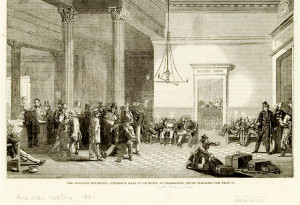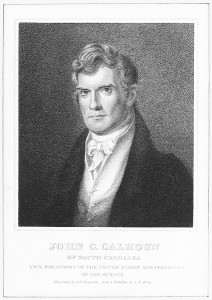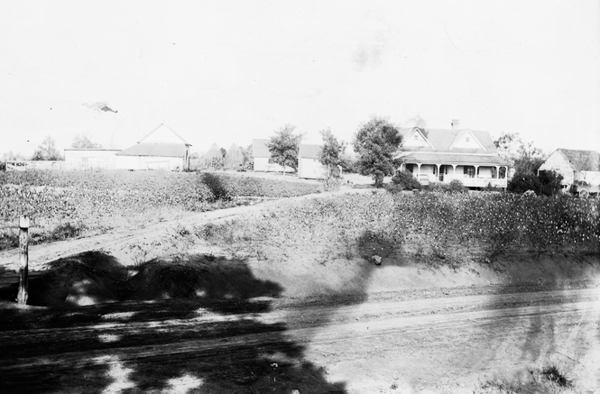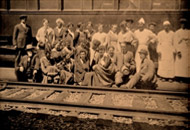Founded in 1785, Abbeville District was one of the six counties formed out of the former Ninety Six District. The northern boundary was the Indian boundary line; on the east and west the boundaries were the Saluda and Savannah rivers. The southern boundary with Edgefield County was marked from the mouth of the Little River to Island Ford on the Saluda. Much of the area was lost for Abbeville over the years. In 1897 a large section was lost to Greenwood County and in 1916 more of this area was lost to form McCormick County.

Etching of the Secession Movement – This image depicts a significant numbers of rural early 20th century farms in S.C. Courtesy of the Miriam and Ira D. Wallach Division of Art, Prints and Photographs: Print Collection, The New York Public Library. The New York Public Library Digital Collections

Etching of Abbeville’s famous family member, John C. Calhoun – courtesy of the Miriam and Ira D. Wallach Division of Art, Prints and Photographs: Print Collection, The New York Public Library. The New York Public Library Digital Collections
The most important Pre-Revolutionary settlement was the settlement of Long Canes. This was the name given to the watershed of the Little River and its main tributary Long Cane Creek. In 1756, settlers from Virginia, one of these families being the Calhoun families, began to take up land grants along these two bodies of water. Under the direction of Governor Thomas Boone, in the 1760’s, colonies of Scots-Irish settlers settled the township of Boonesbororough at the headwaters of the Long Cane Creek.
During the Revolution most of the settlers joined the patriot cause. The best known patriot leader from the area was Andrew Pickens. He was aided by other influential neighbors such as Andrew Hamilton and Robert Anderson. It is believed that it was Pickens influence and the fact that Andrew Hamilton bought the land for the new courthouse from him, that the new courthouse was built near Pickens’s Blockhouse. Dr. John de la Howe, a person on the council tasked with choosing the location, was also given the honor of naming the county. It is speculated that the Doctor might have been born in Abbeville, France but it is only known that he was a native of France.
Abbeville was described by architect Robert Mills “the original swat of learning in the upper country.”, and

This image depicts a significant numbers of rural early 20th century farms in S.C. Courtesy of the Miriam and Ira D. Wallach Division of Art, Prints and Photographs: Print Collection, The New York Public Library. The New York Public Library Digital Collections
The County soon distinguished itself as being the birthplace of many famous South Carolinians. Some of the most notable were US Senator and Vice President John C. Calhoun, Landgon Cheves, Patrick Nobel, James L. Petigru, and the counties adopted sons George McDuffie and Moses Waddel. Moses Waddel founded the Willington Academy that attracted students from all over the South. Other schools in Cokesbury and Due West also attracted students from faraway places.
After the 1790’s the coming of cotton planting to the area sped up the introduction of slavery to the Abbeville area and increased the migration of small farmers to the west. One fourth of the white families by 1790 owned slaves. In 1850 two thirds of the families owned slaves and slaves were two thirds of the population. There were ten planters that owned more than one hundred slaves. George McDuffie owned more than two hundred slaves. In the 1850’s this wealth was shown in the fine homes and plantations in the town of Abbeville.
In November of 1860 after the election of Abraham Lincoln, one of the earliest public meetings in support for secession was held in Abbeville. It is believed that Abbeville native, Francis H. Wardlaw is to have authored the Ordinance of Secession. Bitter loses were brought to Abbeville by the Civil War. There were at least 349 men from the area that died in the war. Abbeville was safely removed from the battles of the war it attracted refugees from the coast and the West.
The Yorkville Enquirer reported on March 19, 1885 – “Mr. B.L. Scott of Abbeville Co., made an experiment with Sea Island Cotton last year and seceded beyond his expectation.”

